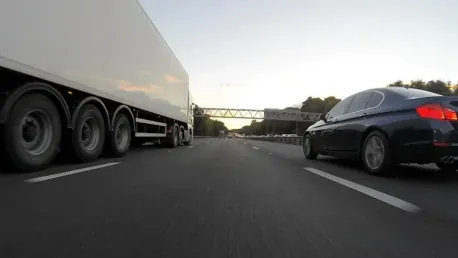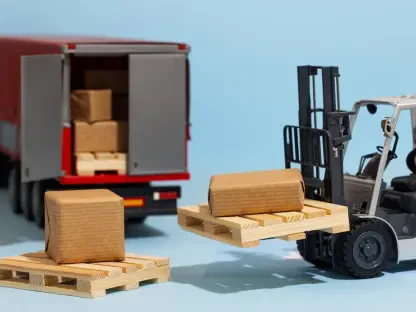The European Commission’s proposed review of the Weights and Dimensions (W&D) directive aims to support the transition to zero-emission vehicles (ZEVs) while safeguarding Europe’s road infrastructure. This revision is essential for aligning vehicle weight and length limits with the goals of reducing emissions and fostering sustainability in the road freight sector.
Challenges with Current Weight Allowances
Insufficient Weight Allowance for ZEVs
The current W&D directive allows ZEVs an additional 2-tonne weight over diesel trucks. However, this extra weight is often insufficient to offset the heavier battery packs of long-distance ZEVs, leading to payload deficits. ZEVs inherently require larger and heavier battery packs to achieve comparable ranges to their diesel counterparts. This discrepancy means that, although they are allowed extra weight, the ZEVs often can’t take advantage of this fully due to the battery weight cutting into their overall payload capacity.
This limitation poses a significant challenge for the adoption of ZEVs, especially for long-haul truck operators who rely on maximizing payloads to maintain efficiency and cost-effectiveness. The additional weight allowance intended to compensate for battery weight isn’t sufficient, leading ZEVs to hit the payload limits prematurely. Failure to address this issue can undermine the operational viability of ZEVs and stall the broader transition towards zero-emission road freight.
Impact on Driving Axle Load
The directive maintains the same driving axle limit for both ZEVs and diesel trucks. This constraint means ZEVs can hit the axle weight limit without fully utilizing the extra weight allowance, affecting their operational efficiency. For instance, the combined axle weight limit for ZEVs and diesel trucks stands at 11.5 tonnes; however, because ZEVs carry heavier batteries, they reach this axle weight limit quicker.
This situation can have a knock-on effect on the commercial viability of ZEVs. Operators might find it challenging to meet payload requirements within the existing axle load restrictions, making the uptake of ZEVs less attractive. Additionally, exceeding the axle load limits can result in fines and operational penalties, further disincentivizing the transition to ZEVs among freight operators who are conscious of both regulatory compliance and business efficiency.
Proposed Changes and Their Implications
Increased Weight Allowance Proposal
To address these issues, the European Commission has proposed increasing the weight allowance for ZEVs from 2 to 4 tonnes, raising the permissible total weight to 44 tonnes. This change aims to enhance ZEV payload capacity and operational viability. By providing this increased allowance, the Commission aims to neutralize the weight disadvantage imposed by the large battery packs necessary for long-distance electric trucks.
This proposed change reflects a more nuanced understanding of the operational realities facing the road freight sector, particularly within the context of transitioning to cleaner vehicle technologies. Increased weight allowances could enable ZEVs to carry similar or higher loads compared to diesel trucks, thus making them a more appealing option for long-distance haulage. However, while these changes can aid the transition to ZEVs, they must be paired with considerations around the impact on road infrastructure.
Debate on Infrastructure Impact
The proposal to increase axle weights has sparked debate among EU Member States, with concerns about the potential impact on road infrastructure. Balancing the benefits of ZEVs with the need to protect roads is a critical consideration. Increased axle weight may lead to quicker deterioration of roads and bridges, requiring more frequent repair and maintenance efforts and incurring higher costs for taxpayers.
The debate calls for a careful evaluation of the infrastructure costs associated with higher weight limits versus the environmental benefits of adopting ZEVs. Stakeholders argue that while environmental benefits are essential, they should not come at the expense of unsustainable strains on road infrastructure. Addressing these concerns involves an intricate balance between promoting cleaner vehicle technologies and maintaining the integrity and longevity of road infrastructure.
Consultancy Report Insights
Cost Assessment for Increased Weights
A consultancy report evaluated the costs of increased vehicle and axle weights for Germany, Poland, and Romania from 2025 to 2040. The findings highlight the importance of calibrated weight allowances to balance ZEV adoption with infrastructure preservation. The report underscored the financial implications for these key EU Member States and provided critical data for making informed policy decisions.
The assessment included projections of road wear and tear, costs of repairs, and necessary upgrades to accommodate higher axle weights. It emphasized that while adopting ZEVs provides long-term environmental gains, these must be weighed against short to medium-term infrastructural expenses. The report’s findings bring to light the complexities and trade-offs involved in revising the W&D directive and underscore the need for a balanced approach.
Recommendations for Weight Distribution
The report suggests reducing weight allowances for 5-axle trucks to balance infrastructure costs and achieve payload parity with diesel trucks. Additionally, promoting 6-axle combinations, which distribute weight more evenly, could significantly reduce road-related expenses. Such configurations help to lessen the impact on individual axles, thereby minimizing wear and tear on the roads.
The report further recommends that an increased share of 6-axle trucks in the market could aid in spreading the weight more evenly across the road infrastructure. This strategy is anticipated to yield significant savings in road maintenance and repair costs while supporting the implementation of heavier ZEVs. Adjusting weight allowances based on truck configurations thus emerges as a practical solution to balancing infrastructure needs with the demand for zero-emission vehicle adoption.
Policy Recommendations for Sustainable Transition
Accelerated Adoption of W&D Review
There is an urgent need for EU Member States to adopt a position on the W&D directive to create favorable conditions for ZEVs. Delays in policy-making could hamper the road freight sector’s transition to zero-emission solutions. Swift adoption and implementation of the revised directive would provide the necessary regulatory certainty and support for industry stakeholders.
Failure to act promptly could lead to prolonged uncertainty for manufacturers, logistics companies, and infrastructure planners. Such delays might slow down the investment in ZEVs and related infrastructure, ultimately stalling progress towards the EU’s emission reduction targets. Therefore, policymakers are urged to expedite the review and adoption process to facilitate a smoother transition to cleaner road freight technologies.
Adjustments to Weight Allowances
The report recommends lowering the proposed ZEV weight allowance for 5-axle combinations from 4 to 3 tonnes and adjusting the driving axle limit from 12.50 to 11.75 tonnes. These adjustments would help minimize infrastructure costs while supporting ZEV adoption. By refining these allowances, policymakers can ensure that the transition to ZEVs doesn’t disproportionately burden road infrastructure.
This approach aims to strike a balance wherein the extra weight allowance supports ZEV payload capacities without imposing unsustainable pressures on roads and bridges. Adjustments to driving axle limits align operational needs with infrastructural capacities, ensuring that the shift towards zero-emission vehicles is both feasible and sustainable.
Promoting Market Uptake of ZEVs
Maintaining Allowances for 6-Axle Trucks
The proposed 4-tonne allowance for 6-axle trucks should be maintained, as it helps distribute weight more effectively and supports market uptake without increasing rear axle weight limits. By preserving this allowance, the policy can enhance the feasibility and attractiveness of 6-axle ZEVs for freight operators.
These trucks offer a more balanced weight distribution, reducing the impact on any single axle and thus mitigating road wear. Maintaining this allowance is crucial for encouraging the adoption of ZEVs within the logistics and road freight sectors, which would benefit from the efficiency and sustainability gains without the associated risks to infrastructure integrity.
Eliminating TEN-T Core Network Restrictions
Proposed restrictions limiting ZEV circulation to certain parts of the TEN-T core network should be eliminated. Such restrictions could negatively impact the transition to zero-emission road freight. Limiting ZEV movement within confined corridors might stifle broader adoption and integration into the wider logistics network, ultimately inhibiting efforts to reduce emissions.
Eliminating these constraints ensures that ZEVs can operate across diverse routes and regions, fostering wider acceptance and deployment. This approach supports a comprehensive transition in the road freight sector, aligning with broader environmental and sustainability goals by facilitating a more seamless integration of zero-emission technologies into daily freight operations.
Conclusion
The European Commission has proposed a review of the Weights and Dimensions (W&D) directive to support the transition to zero-emission vehicles (ZEVs) while ensuring that Europe’s road infrastructure remains secure and efficient. This directive revision is crucial for aligning vehicle weight and length limits with the broader goal of reducing emissions and promoting sustainability in the road freight sector. By adjusting these regulations, the European Commission aims to encourage the adoption of eco-friendly vehicles, thus contributing to the reduction of greenhouse gases. These changes are designed to foster a more sustainable and environmentally-friendly approach within the transportation industry, which is a significant step towards meeting European Union climate targets. Furthermore, updating the W&D directive will help remove potential barriers to the deployment of ZEVs, paving the way for a cleaner, greener future in road transportation. This initiative highlights the balance between environmental objectives and the practical needs of maintaining effective and safe road systems across Europe.









